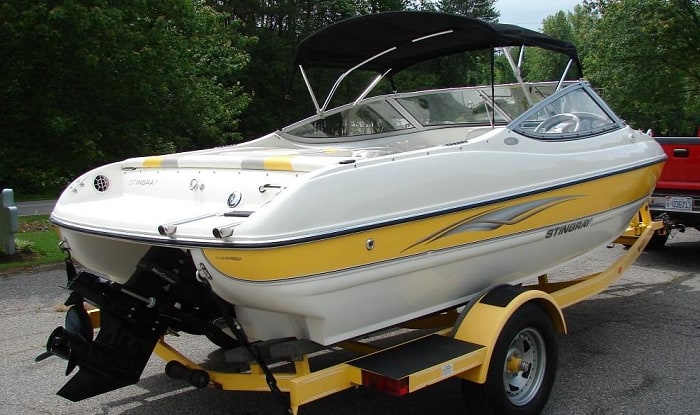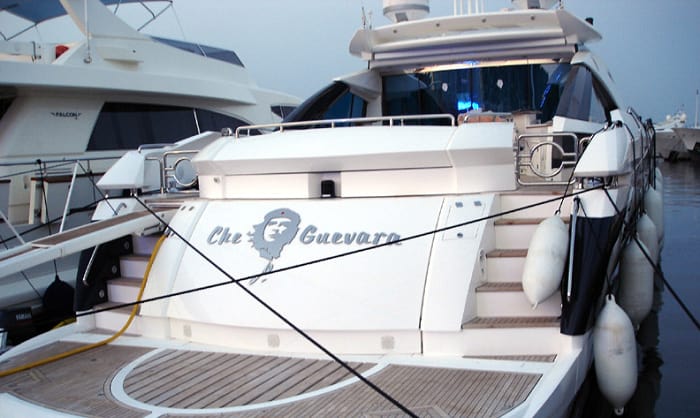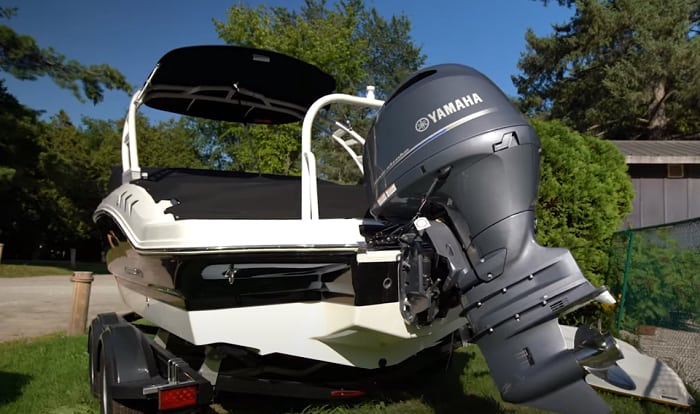What is an outdrive on a boat? Sterndrive or outdrive engines, also called inboard/outboard engines, share qualities of both inboard and outboard motors. Usually, the engine, a 4-stroke, is mounted inside the boat, underneath the hull. It’s hooked up to a propeller or main outdrive unit that is installed outside the boat, particularly submerged on its bottom.
The system combines both inboard and outboard elements for optimal propulsion. For a more detailed explanation of how a sterndrive engine works and its pros and cons, please take the time to read this post.
Table of Contents
How Do Boat Outdrive Motors Work
For a complete sterndrives definition, let’s start with how these babies are set up. Typically, you’ll see small vessels having only one sterndrive unit, mounted on the bottom middle portion of the transom. Larger ones will have two, positioned on both port and starboard on that same part of the vessel.
How do they make the boat move? If you look at a standard sterndrive diagram, you’ll see the intricate connection between the units, the inboard engine, and the propeller. There are gear sets, driveshafts, and propeller shafts responsible for making sure that the engine will kick the propeller into action once it’s running.
Usually, there’s only one propeller, but some systems include two counter-rotating ones. As you can see, despite the inclusion of two boat motor systems, it’s a fairly straightforward system as far as how it powers a vessel is concerned.
Other Qualities Of An Outdrive System
- If you closely inspect how an outdrive unit is designed, you’ll inevitably notice its aerodynamic construction. It’s fatter at the front and tends to thin out at the back for the least resistance and optimal propulsion. The same goes for the “fin” on the bottom-most part of the unit.
- Plenty of units include more sophisticated features to ensure that the motor will stay cool while running by having what’s essentially an exhaust pipe. You’ll see some units with water-repelling flaps to make sure that the motor stays dry throughout any trip.
- The motor also needs to stay cool. For this, some sterndrives use tiny holes to allow engine-cooling water inside them.
- Boats frequent saltwater places will typically attach zinc anodes to connect outdrives to your boat. They’re termed “sacrificial” because they’ll corrode away instead of the metal parts of the sterndrive.
- The counter-rotating propellers found in some larger vessels give more control and make turns more manageable.
- Some units incorporate a fail-safe mechanism, such as the reverse latching mechanism found in a few. What it’s for is mainly to prevent the boat from being damaged if the unit ever hits bottom with enough force to dislodge it (and a portion of the boat with it!). These mechanisms may even leave the sterndrive damage-free, too, thanks to how they’re designed and with a little luck on your part.
Pros And Cons Of Sterndrive Boat Engines
Many boat owners love (or love to hate) an outdrive boat because of the following qualities:
1. Pros
- Leaves more room in the interior of the boat as a whole.
- Paves the way to a larger transom platform. The extra space allows activities such as sunbathing, picnics, group fishing, and other related relaxing pastimes to be done while on-board.
- The motor isn’t exposed to the elements since it’s essentially installed the way an inboard is normally installed.
- Generally imparts a more dynamic performance thanks to the positioning of the outdrive unit.
- Better control for the captain.
- Some inboard/outboard vessels tend to be more budget-friendly than their outboard counterparts.
2. Cons
- The prop is exposed at the bottom of the boat, raising its chances of being struck by debris, coral outcrops, and underwater rocks. It may even pose a significant risk to swimmers and surfers who come near your vessel while its engine is running.
- Operating sterndrives require persistent caution of water depth, especially if you’re traversing unfamiliar waters with it. You may have to invest in a good depth sensor that doesn’t go blind at certain depths if you’re going for outdrives all the way.
- A couple of units may be hard to maintain and clean due to hard-to-reach spaces,nooks and crannies.
- May require repairs frequently compared to other boat engine systems.
FAQs
1. Is sterndrive better than outboard?
When it comes to maintenance, sterndrive engines pale in comparison to outboards. Just ask your local boat repair shop, and chances are, they’ll say that they mostly do preventable maintenance for outboard motors, while it usually repairs for outdrives.
To me, that’s the only Achilles heel of steroids. They cost more to maintain, but would you really be willing to sacrifice that precious real estate on your vessel and the relatively solid performance you get from this kind of engine setup?
2. Will sterndrive work in saltwater?
While sterndrive engines are arguably more high-maintenance (barnacles can be especially troublesome!), most of them are built to withstand the corrosive effects of saltwater. Still, I will always advise fellow boaters to never let sterndrives stay in the water, especially saltwater, for prolonged periods.
Conclusion
So, to sum up the answer to every boating enthusiast’s curiosity, “What is an outdrive on a boat?” Think of it as a hybrid inboard and outboard motor setup typically with well-thought-out features that make marine propulsion a breeze and leaves plenty of room on your boat. Despite its downsides, it’s hard to quickly rule it out and settle for pure inboards or outboards because of the advantages outlined here.

“My intention from the first day establishing Boating Basics Online is to provide as much help as possible for boaters who want to experience a first safe and convenient trip. So feel free to join us and share your beautiful journeys to the sea!”



